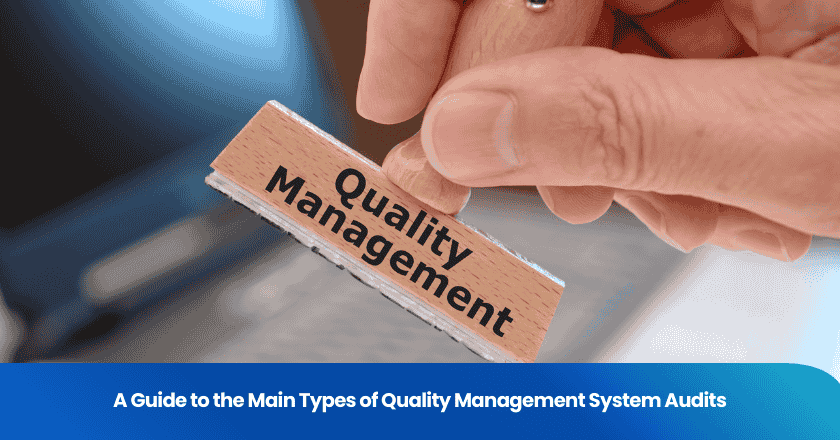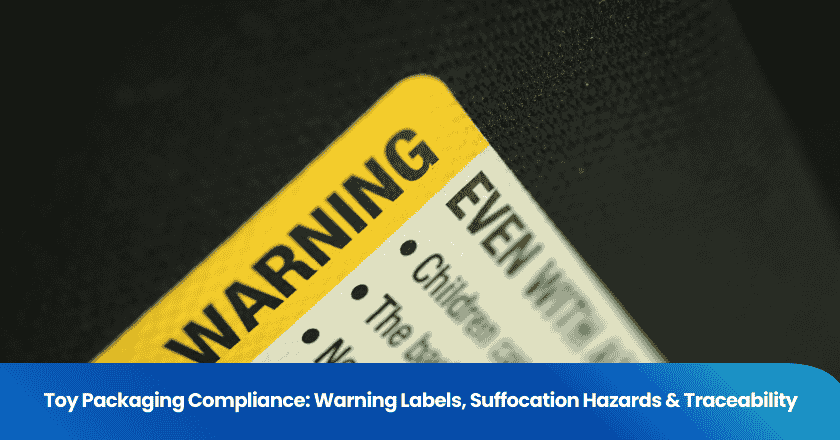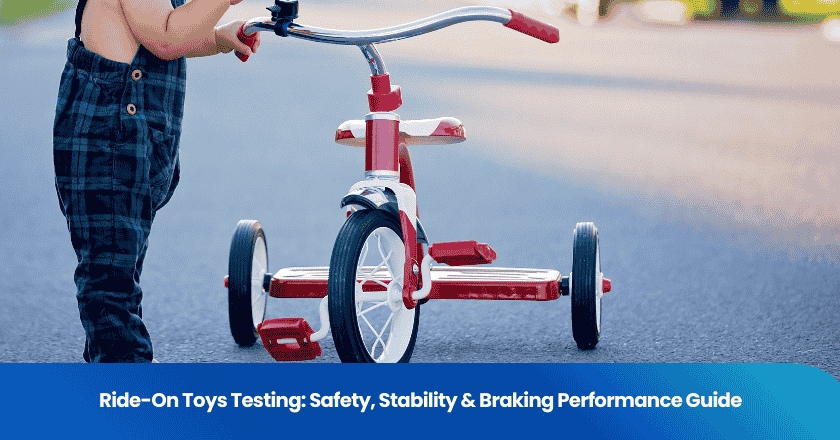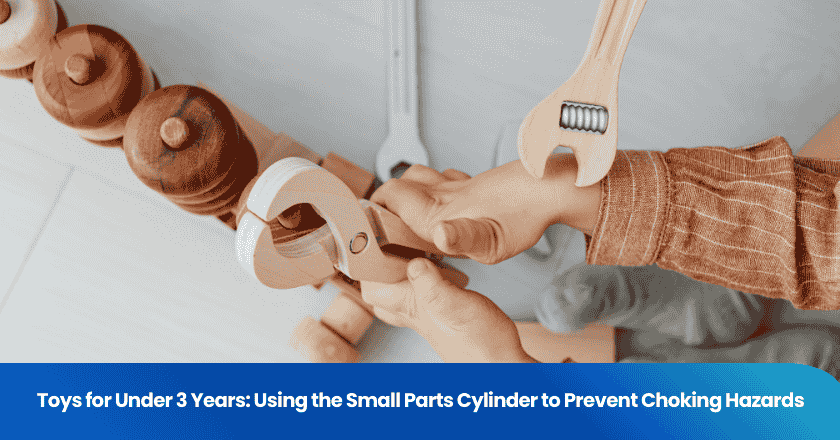
You will encounter several types of quality management system audits during your work with quality systems. These include internal audits, external audits, and supplier audits. The table below outlines each audit type and its core purpose:
| Type of Audit | Description |
|---|---|
| Internal Audits | Your team reviews internal processes to ensure your organization follows its quality management system. |
| External Audits | Independent parties assess your compliance with industry regulations and certifications. |
| Supplier Audits | You evaluate your suppliers' systems to confirm they meet your requirements. |
Understanding the types of quality audits improves your ability to achieve compliance and drive continuous improvement. Compliance audits help you avoid legal risks, while performance audits support cost reduction and productivity gains. Each audit type serves a unique purpose and process, giving you a comprehensive view of your organization's status.
Key Takeaways
- Understand the three main types of quality audits: internal, external, and supplier. Each serves a unique purpose in ensuring compliance and improving processes.
- Conduct internal audits regularly to identify inefficiencies and promote a culture of continuous improvement within your organization.
- Prepare thoroughly for external audits by organizing documentation and aligning practices with industry standards to ensure compliance.
- Utilize supplier audits to assess the quality management systems of your suppliers, ensuring they meet your requirements and maintain product quality.
- Embrace a culture of continuous improvement by treating every audit as an opportunity to enhance your quality management system and operational efficiency.
Types of Quality Audits
You will encounter several types of quality audits as you manage or participate in a quality management system. Each audit type serves a distinct purpose and follows a unique process. Understanding these differences helps you prepare effectively and ensures your organization meets both internal and external expectations.
Internal Quality Audit
An internal quality audit, also known as a first party audit, allows you to assess your own processes and controls. Your internal team conducts these audits to evaluate the effectiveness of your operations, risk management, and compliance with established procedures. You use internal quality audits to identify areas for improvement, uncover inefficiencies, and promote a culture of continuous improvement.
Internal audits enhance risk management by identifying potential issues early. They also optimize resource utilization and encourage employees to engage in quality enhancement efforts.
The typical steps for conducting an internal quality audit include:
1. Set up an audit program that outlines the schedule and scope.
2. Prepare an audit plan detailing methods, personnel, and criteria.
3. Arrange logistics, such as scheduling and inviting participants.
4. Conduct the audit using interviews, observations, and document reviews.
5. Record findings, including both strengths and nonconformities.
6. Hold a closing meeting to discuss results and next steps.
You gain valuable insights from internal quality audits, which help you drive operational efficiency and maintain high standards.
External Quality Audit
An external quality audit, often referred to as a third party audit, involves independent auditors evaluating your organization. These audits focus on verifying compliance with industry standards, regulations, or certification requirements. You may undergo an external quality audit to achieve or maintain certifications such as ISO standards.
The objectives and scope of external quality audits differ from internal audits. External auditors validate the fairness and reliability of your processes, often focusing on legal accountability and adherence to recognized standards.
| Audit Type | Objectives | Scope |
|---|---|---|
| Internal Audit | Improve internal processes and risk management | Broad and flexible, covering financial processes, operational efficiency, IT controls, regulatory compliance, and risk assessment. |
| External Audit | Validate the fairness and reliability of financial statements | Narrower in scope, focusing mainly on financial statements and legal accountability. |
You prepare for an external quality audit by aligning your practices with global standards, organizing documentation, and engaging stakeholders. These audits serve as checkpoints to ensure your quality management system remains compliant and effective.
Regular external audits, such as ISO surveillance audits, verify ongoing adherence to standards and drive continuous improvement.
External quality audits, also known as quality assurance audits, provide assurance to customers and regulators that your organization meets required standards. They also help you identify gaps and implement corrective actions.
Supplier Audit
A supplier audit, or second party audit, focuses on evaluating your suppliers’ quality management systems. You conduct these audits to ensure your suppliers meet your requirements and maintain consistent quality in the products or services they deliver. Supplier audits are essential for managing supply chain risks and maintaining high standards throughout your operations.
| Criteria for Supplier Selection | Common Findings |
|---|---|
| Supplier's certification status (e.g., ISO 13485) | Compliance with quality management processes |
| Criticality of the products supplied | Documentation requirements |
| Supplier's quality management system | Non-compliance issues |
| Experience with the supplier regarding delivery reliability | Quality of delivered products |
Supplier audits help you identify new risks, discover vulnerabilities, and ensure compliance with contractual obligations. You can review vendor performance, adjust risk management practices, and maintain oversight through regular audits.
Ongoing oversight through supplier audits allows you to identify emerging risks and ensure real-time tracking of supply chain performance.
How System, Process, and Product Audits Fit In
Within these main types of quality audits, you will also encounter system, process, and product audits. These audits focus on different aspects of your operations:
| Type of Audit | Purpose |
|---|---|
| System Audit | Evaluates the effectiveness of the quality management system and reviews quality records. |
| Process Audit | Verifies the effectiveness of business processes against specified requirements and controls. |
| Product Audit | Examines product conformance against specifications and customer requirements. |
You may use system, process, or product audits as part of an internal, external, or supplier audit. For example, an external auditor may conduct a system audit to verify your compliance with ISO standards, while you might perform a process audit during an internal quality audit to assess a specific workflow. Supplier audits often include product audits to ensure delivered goods meet your specifications.
By understanding the types of quality audits and how system, process, and product audits fit within them, you can better prepare for each scenario and strengthen your overall quality management system.
System, Process, and Product Audits
Understanding the differences between system, process, and product audits helps you strengthen your quality management system. Each audit type targets a specific area and serves a unique purpose.
System Audit
A system audit reviews your entire quality management system to determine if it functions as intended. You examine planning, execution, reporting, and post-audit actions. Effective planning sets clear objectives and scope. During execution, you gather evidence to evaluate how well your system meets requirements. Reporting documents findings and suggests improvements. Post-audit actions ensure you address issues and drive continuous improvement. System audits focus on the big picture, making sure all processes and policies work together to achieve your goals.
Tip: Use system audits to identify gaps in your overall management approach and to verify compliance with industry standards.
Process Audit
A process audit examines the steps and methods you use in daily operations. You check if your team follows standard operating procedures (SOPs) and look for ways to improve efficiency. Process audits often review key metrics such as cycle time, cost, quality, and customer satisfaction. You may use interviews, process mapping, and risk assessments to gather information.
| Key Processes | Metrics Used |
|---|---|
| Performance Metrics | Cycle time, cost, quality, customer satisfaction |
| Compliance and Risk Assessment | Compliance adherence |
| Stakeholder Interviews | N/A |
| Process Mapping | N/A |
| Continuous Improvement | N/A |
Process audits differ from system audits because they focus on specific workflows rather than the entire management system. You use them to verify compliance with procedures and to find opportunities for improvement.
Product Audit
A product audit inspects finished products to ensure they meet specifications and customer expectations. You check dimensions, performance, and other output characteristics. Product audits help you catch defects, manage risks, and maintain compliance with regulations.
- Verify requirements to confirm products meet specifications.
- Uncover opportunities to address weaknesses early.
- Assess quality and identify defects.
- Track trends to spot recurring issues.
- Manage risks and maintain compliance.
- Reassure stakeholders about product quality.
Product audits focus on the final output, while process and system audits look at how you achieve those results. By using all three audit types, you gain a complete view of your organization’s strengths and areas for improvement.
| Audit Type | Definition | Purpose | Focus |
|---|---|---|---|
| System Audit | Reviews the entire QMS for effectiveness | Ensure system-wide compliance and improvement | Policies, procedures, overall structure |
| Process Audit | Examines operational steps and methods | Verify SOP compliance and efficiency | Inputs, workflow, operator performance |
| Product Audit | Inspects finished products for specification conformance | Ensure product quality and customer satisfaction | Output characteristics, defects, trends |
Audit Purposes
Quality management system audits serve three main purposes: compliance, effectiveness, and improvement. You need to understand these purposes to maximize the value of every audit, whether you are conducting a first party audit, second-party audit, or third-party audit.
Compliance
Compliance audits confirm that your organization follows established standards, regulations, and internal policies. You use these audits to avoid legal risks and maintain certifications. For example, a third-party audit often checks your adherence to international standards, while a first party audit reviews your own procedures. In industries like pharmaceuticals, external audits are prioritized to meet strict regulatory requirements.
| Type of Audit | Purpose | Industry Prioritization |
|---|---|---|
| Internal Audits | Assess adherence to internal processes, identify areas for improvement | Proactive compliance before external audits, common in all industries |
| External Audits | Evaluate QMS against international standards, provide unbiased evaluation | Required for certification, prioritized in regulated industries like pharmaceuticals |
| Supplier Audits | Verify suppliers meet quality expectations | Critical in interconnected supply chains, prioritized in manufacturing and aerospace |
| Risk Management | Identify and eliminate risks in processes | Essential in highly regulated industries to avoid legal repercussions |
| Continuous Improvement | Drive ongoing enhancements in quality management systems | Fundamental across all industries to maintain competitiveness and compliance |
You should prepare for compliance audits by reviewing documentation and ensuring your team understands the requirements for each type of quality audit.
Effectiveness
Effectiveness audits measure how well your quality management system achieves its objectives. You use these audits to evaluate performance and identify areas for enhancement. A first party audit helps you set benchmarks and track progress. A third-party audit provides an unbiased view of your system’s strengths and weaknesses. Second-party audit results help you assess supplier reliability.
- Establish performance metrics to guide internal audit functions.
- Collaborate with stakeholders to develop performance objectives.
- Track performance trends to identify areas for enhancement.
You gain valuable insights from effectiveness audits, which drive continuous improvement and help you maintain high standards.
Improvement
Improvement audits focus on identifying opportunities for ongoing enhancement. You use these audits to address deficiencies, analyze root causes, and implement corrective actions. Whether you conduct a second-party audit of a supplier or a first party audit of your own processes, you should always look for ways to improve.
| Improvement Mechanisms |
|---|
| Structured approach to address identified deficiencies |
| Root cause analysis of issues |
| Action plans for remediation |
| Follow-up procedures to verify improvements |
You should treat every audit as a chance to strengthen your quality management system. By understanding the types of quality audits and their purposes, you can prioritize compliance, effectiveness, and improvement in your organization.
Audit Processes
Planning
You start every audit with a clear plan. You define the scope and objectives, identify key risks, and set materiality thresholds. You select trained auditors who understand quality management system standards. You create an audit plan that outlines what to audit, the timeline, and who is responsible. You use checklists to ensure consistency and thoroughness. You focus on gathering factual evidence and encourage open communication with your team. You address issues by planning corrective actions and aim for continuous improvement.
Standard steps for planning a quality audit:
1. Set clear objectives and scope.
2. Identify key risks and materiality thresholds.
3. Develop a detailed audit plan.
4. Select qualified auditors.
5. Prepare checklists and documentation.
Tip: Early planning helps you avoid surprises and ensures your audit covers all critical areas.
Execution
During execution, you gather evidence by examining documents, performing analytical procedures, and testing account balances. You assess management estimates and evaluate internal controls. You assign tasks to team members and manage resources to keep the audit on track. You monitor progress against goals and timelines. You maintain communication with stakeholders to keep everyone informed. You watch for scope creep and address any changes quickly. You manage risks and ensure timely decision-making to maintain momentum.
Key activities in the execution phase:
1. Assign tasks and responsibilities.
2. Gather and analyze evidence.
3. Track performance and progress.
4. Communicate with stakeholders.
5. Manage resources and risks.
Note: Effective execution relies on clear roles, strong communication, and proactive risk management.
Reporting
You finish the audit by drafting a report that communicates findings and recommendations. You organize the report using the 5Cs approach: Criteria, Condition, Cause, Consequence, and Corrective Action. You ensure clarity so readers understand the results. You assign accountability for corrective actions and provide specific steps to address issues. You use the report to facilitate prompt action and drive improvement.
Essential elements of an effective audit report:
- Criteria: Standards for assessment.
- Condition: Actual situation observed.
- Cause: Root cause of the issue.
- Consequence: Potential impact.
- Corrective Action: Steps to resolve the issue.
A well-structured report helps your team take ownership and implement improvements quickly.
Preparing for Audits
Preparing for audits requires a strategic approach. You need to focus on documentation, team readiness, and clear communication. Each audit type presents unique challenges, but you can overcome them with the right preparation.
Internal Audit Preparation
You strengthen your internal audit process by organizing documentation and reviewing internal controls. Assign an audit coordinator to manage communication and documentation. Train your team so everyone understands their compliance responsibilities. Conduct a pre-audit review to simulate the audit and correct inconsistencies. Create an audit readiness checklist to track required documents and responsibilities. Practice responses to anticipated questions to build confidence.
Checklist for Internal Audit Preparation:
- Organize records for easy access.
- Review policies and procedures.
- Communicate roles and expectations.
- Conduct mock audits.
- Track corrective actions from previous audits.
Tip: Use compliance audit software to automate processes and maintain real-time tracking.
External Audit Preparation
External audits require systematic organization and clear communication. Understand the scope and objectives of the audit. Organize financial and operational records ahead of time. Reconcile statements with supporting documents to ensure accuracy. Designate a main point of contact for the audit team. Prepare your staff by reviewing compliance requirements and conducting mock interviews. Use digital tools to categorize and retrieve documents efficiently.
| Step | Action |
|---|---|
| Scope Review | Clarify audit objectives |
| Record Organization | Systematically arrange documentation |
| Team Alignment | Train staff and confirm availability |
| Communication | Establish open channels for queries |
| Pre-Audit Review | Simulate audit conditions |
Note: Reviewing previous audit findings helps you address corrective actions and avoid repeat issues.
Supplier Audit Preparation
Supplier audits present resource and communication challenges. Invest in training to upskill staff and leverage automation for compliance tracking. Establish clear communication protocols and assign a central contact for coordination. Strengthen internal controls by regularly reviewing and testing processes. Monitor regulatory changes and adapt your procedures as needed. Conduct process walkthroughs to assess operational compliance and verify preventive actions.
Best Practices for Supplier Audit Preparation:
- Train staff on audit requirements.
- Automate compliance tracking.
- Review and test internal controls.
- Maintain open communication with suppliers.
- Monitor regulatory updates.
Cultivate audit readiness as a core aspect of your quality culture. Clean up facilities and confirm schedules to project a positive image.
You improve your audit outcomes by following these steps and integrating best practices for documentation and team readiness. Understanding the types of quality audits helps you tailor your preparation and achieve successful results.
You encounter several types of quality audits, each with distinct impacts on your organization.
| Type of Audit | Description | Impact on Audit Outcomes |
|---|---|---|
| Internal Quality Audit | Conducted by your team | Focuses on internal processes |
| External Quality Audit | Performed by outside auditors | Influences business decisions |
| Supplier Audit | Involves stakeholders like suppliers | Affects business relationships |
| System Audit | Reviews management systems | Ensures workflow standardization |
| Process Audit | Examines manufacturing processes | Impacts product quality |
| Product Audit | Assesses product standards | Determines market acceptance |
Ongoing preparation and improvement help you adapt to changing requirements, boost efficiency, and create a structured environment for success.
- Foster a culture of continuous improvement.
- Regularly evaluate and enhance your processes.
- Apply these practical tips to strengthen your audit readiness.
FAQ
What is the main goal of a quality management system audit?
You use a quality management system audit to check if your processes meet set standards. The main goal is to ensure compliance, improve effectiveness, and support continuous improvement in your organization.
How often should you conduct internal audits?
You should schedule internal audits at least once a year. Some industries require more frequent audits. Regular audits help you catch issues early and keep your quality management system effective.
Who can perform an internal audit?
You can assign trained employees from your organization to perform internal audits. Auditors should remain objective and not audit their own work areas. This approach ensures fair and accurate results.
What documents do you need for an external audit?
You need policies, procedures, records, and evidence of compliance. Prepare training logs, process maps, and previous audit reports. Organize these documents for easy access during the audit.
Grow your business with TradeAider Service
Click the button below to directly enter the TradeAider Service System. The simple steps from booking and payment to receiving reports are easy to operate.




